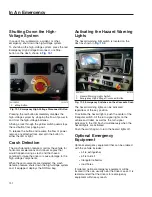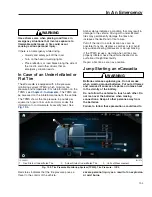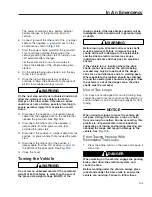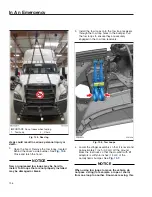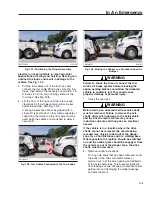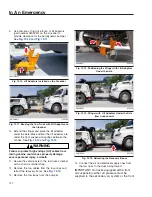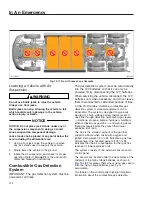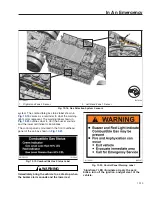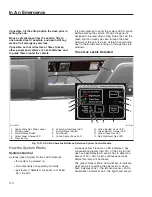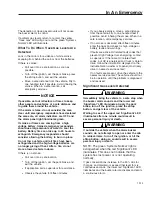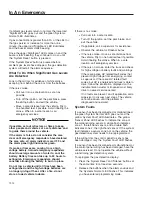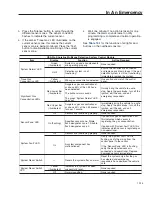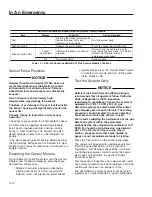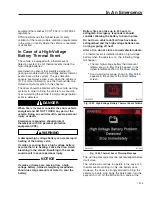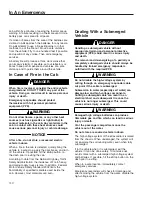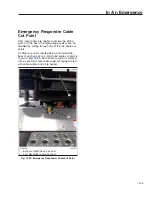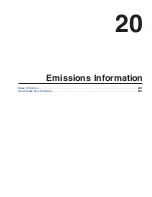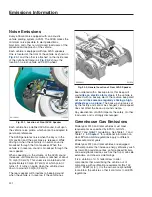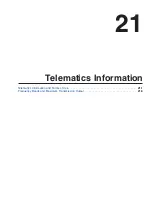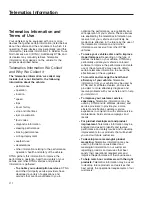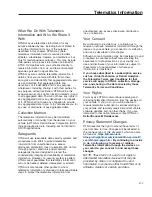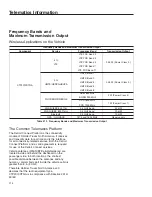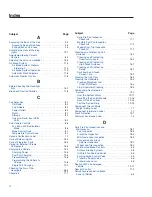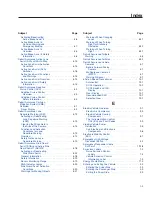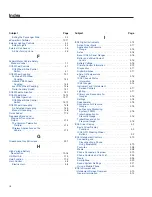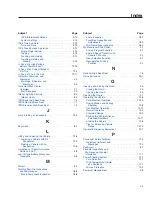
USA Pro Shoreline Multizone Detection System Control Module
Item
Display
Function
Action Required
’Test’
—
Pressing the switch illuminates all
the control panel LEDs and
transfers all I/O contacts.
Test the system daily.
’Silence’ Switch
—
Silences the alarm buzzer.
Press to silence the alarm buzzer.
’Silence’ Switch LED
Yellow
(illuminated0
Indicates the buzzer is active but
silenced.
Quickly bring the vehicle to a safe
stop. Apply the park brake, turn off the
ignition, exit the cab, and call
emergency responders.
Off
Normal condition.
None required.
Table 19.1, USA Pro Shoreline AMGaDS III Plus Control Module Functions
Sensor False Positives
NOTICE
Daimler Truck North America (DTNA) does not
recommend cleaning or disinfecting a vehicle
with products that contain silicone. Silicone-
based chemicals and cleaners may disable the
sensors.
Harsh chemicals and extremely high
temperatures may damage the sensors.
Puncture of or damage to the seal located inside
the sensor housing will significantly shorten the
sensor life.
Periodic testing is required to verify sensor
operation.
The sensors are sensitive to all hydrocarbon vapors.
An alarm may be triggered by cleaning products,
paint, polish, lacquer, gasoline, silicone, silicone
spray, or other chemicals. The sensors may also
detect hydrogen fumes from an overcharged 12V
battery.
If the alarm buzzer goes off but it is determined that
the high-voltage batteries are not involved in a high-
thermal event, check for recent use of chemicals or a
battery charger.
Resetting the Control Module
Do not attempt to reset the system until the gas has
cleared, and, if called, emergency personnel have
declared the vehicle safe.
•
Silence: If an alarm has been activated by
cleaning chemicals or a fault, pressing the
’Silence’ switch will silence the alarm buzzer.
•
System Reset: press the ’System Reset’ switch
to transfer I/O contacts and turn off the yellow
alarm ’Silence’ LED.
Test the System Daily
NOTICE
Daimler Truck North America (DTNA) strongly
recommends that all operators follow California
Code of Regulations (CCR) inspection
requirements, regardless of where the vehicle is
operated. Per Title 13 CCR
§
935 (2), gas
detection systems should be tested three times
per calendar year at equal intervals. The testing
procedure should simulate the same operating
environment in which the vehicle is used.
Test results validating the performance of the gas
detection system within the parameters
established by the component manufacturer and
NFPA 52 should be maintained as a permanent
part of the vehicle service records. Use of
alcohol, propane, and other harsh liquids or
gases are not acceptable methods for testing.
Press the ’Test’ button on the control panel daily.
The system will proceed with a self-diagnostic test
that will include illumination of the ’Trace Gas,’
’Significant,’ and all other sensor LEDs. It will also
sound the piezo buzzer. Listen to verify the buzzer
alarm goes off and watch to see that all lights
illuminate or flash.
Test the sensors three times per calender year, after
any system component has been replaced, and if the
vehicle was involved in an accident or fire.
The gas detection system sensors must be tested
regularly by a trained technician, using certified test
In An Emergency
19.15
Summary of Contents for PX113064S T 2016
Page 4: ......
Page 10: ......
Page 18: ......
Page 58: ......
Page 86: ......
Page 112: ......
Page 122: ......
Page 142: ......
Page 154: ......
Page 155: ...12 Steering System Power Steering System 12 1...
Page 158: ......
Page 159: ...13 eAxle eAxle 2 Speed Transmission 13 1...
Page 176: ......
Page 190: ......
Page 202: ......
Page 222: ......
Page 223: ...20 Emissions Information Noise Emissions 20 1 Greenhouse Gas Emissions 20 1...
Page 229: ......
Page 236: ......

